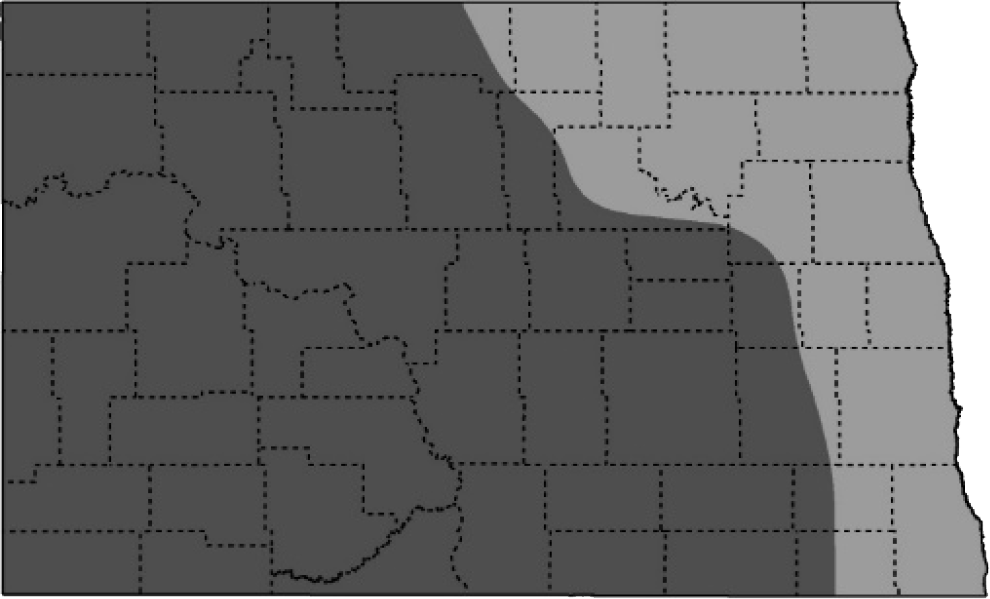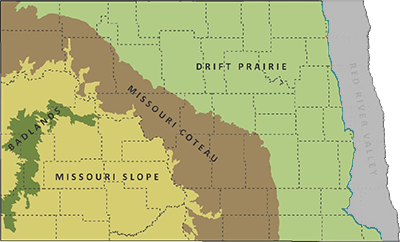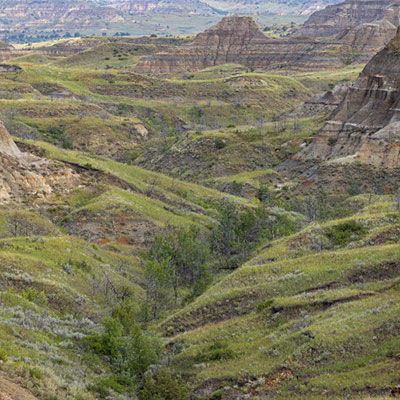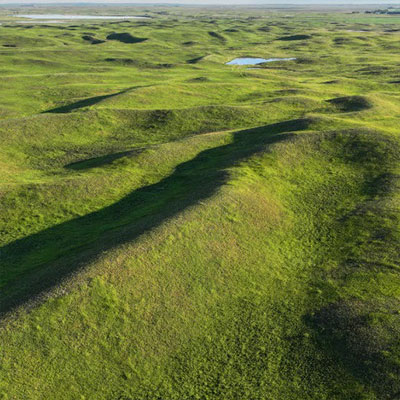Grasshopper Sparrow

NDGF
L 5”, WS 7.75”, 0.6 oz. Short-tailed, flat-headed, yellowish with unmarked breast. Yellow spot between the eyes and bill.
Status in North Dakota
Occurs in North Dakota from late April to early October. Peak breeding season late May to late July.
Reason for SWAP Designation
At-risk, ND range important (SGCN b.).
ND ranks 3rd out of 40 states for highest percent of the global population (14.99%) during the breeding season (eBird).
The Grasshopper Sparrow is declining, and the population has decreased 68% since 1970.
Threats
Loss of grassland.
Degradation of grasslands from invasive plants, woody encroachment, succession, and loss of diversity.
Loss of ranching heritage and grass-based operations, grazing is essential to grassland health and diversity.
Brown-headed Cowbird parasitism is generally low but may be moderate to high in some regions.
Direct and indirect impacts from energy development, Grasshopper Sparrows exhibit displacement from areas within and surrounding wind turbines.
Research and Monitoring
Habitat requirements, demographic studies, and effects of management practices such as grazing, burning and haying have been broadly researched on the breeding grounds.
Additional information is needed on migration and wintering behaviors.
The Breeding Bird Survey, eBird and Partners in Flight Databases are key sources of information on distribution and population trends.
Management Recommendations
- Protect and conserve large, intact tracks of native prairie/unbroken grassland and tame grassland.
- Reconstruct or restore grassland adjacent to existing tracts of native prairie/unbroken grassland.
- Use native grasses when replanting or restoring grassland.
- Graze or hay expired CRP. The density of Grasshopper Sparrows is 82% lower in CRP fields converted to cropland, but density will increase if expired CRP is converted to grazed grassland (+8%) or hayland (+40%).
- Promote well-managed grazing lands and working grasslands for biodiversity, sustainability, and resiliency.
- Prevent or remove shrubs and tall woody vegetation in grasslands, either mechanically or by prescribed fire.
- Delay mowing or haying until August 1.
- Avoid or minimize placement of development (e.g. energy, housing, utility lines) or other human infrastructure in native prairie/unbroken grassland.
- Follow beneficial or best practices during the design, siting, construction, operation, and maintenance of tall structures (e.g. transmission lines, communication towers, wind turbines).




